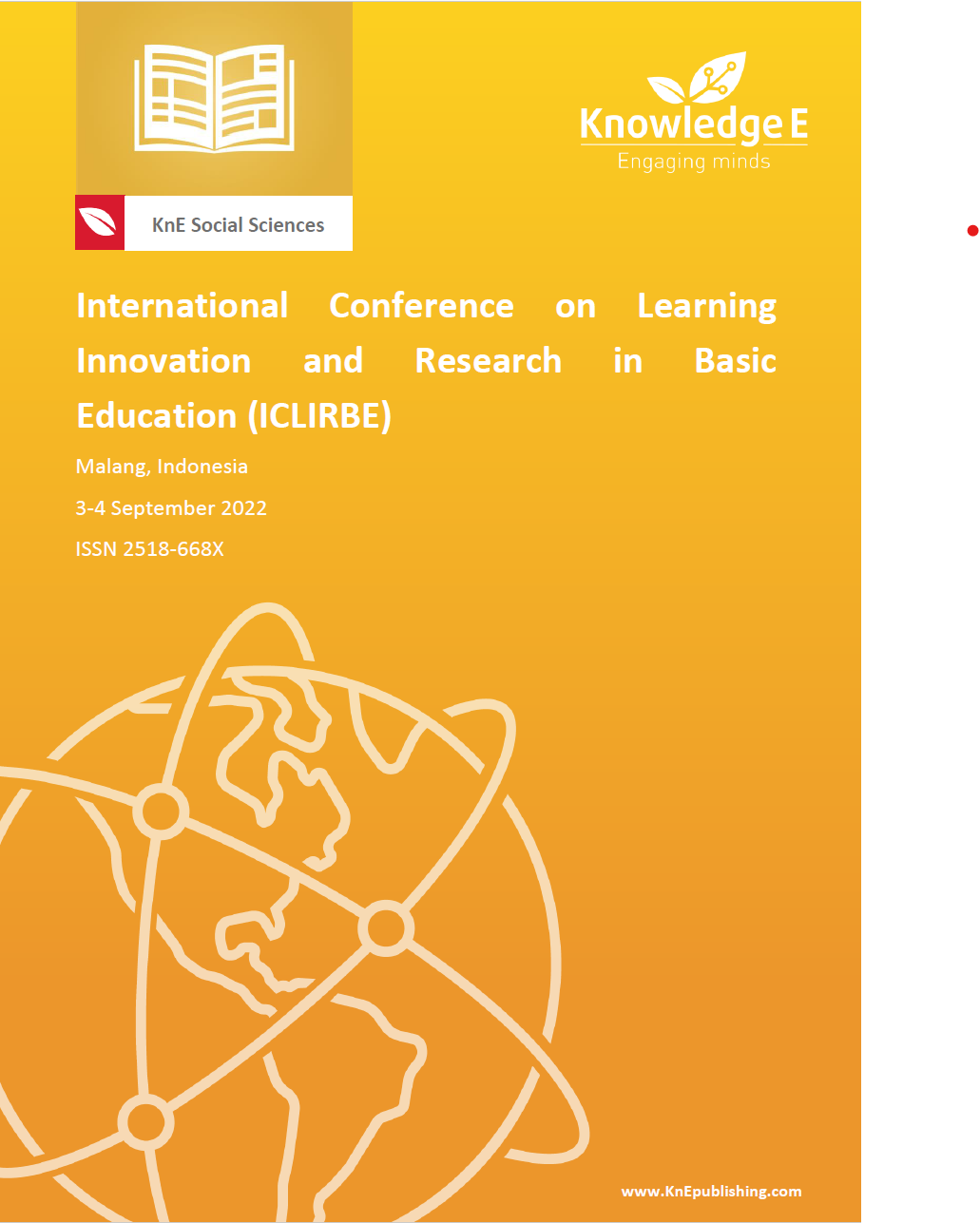Construction of the STEAM Learning Model with a Design Thinking Approach on Renewable Energy Materials
DOI:
https://doi.org/10.18502/kss.v8i8.13284Abstract
The industrial revolution 4.0 accelerates the need for resources with contextual skills that are relevant to technological advances. Renewable energy is a global issue that needs to be followed up as a concern in education. The concept of STEAM learning is seen as a learning innovation that accommodates the skills needed in the era of the industrial revolution 4.0. In addition, through a design thinking approach, students are facilitated to realize creativity or ideas in solving problems around them. This study aims to reconstruct the STEAM learning model with a combination of design thinking approaches in renewable energy learning materials. This study uses a descriptive qualitative approach with data sources from the literature. The analytical tool used is the Miles and Huberman interactive model data analysis. The expectation from this research is the formulation of a combination framework between the STEAM learning model and design thinking that can be applied to learning renewable energy materials.
Keywords: Design Thinking, Renewable Energy, STEAM
References
[2] Hlukhaniuk V, Solovei V, Tsvilyk S, Shymkova I. “Steam education as a benchmark for innovative training of future teachers of labour training and technology.” Proc Int Sci Conf. 2020;1(1):211–221. doi: 10.17770/sie2020vol1.5000.
[3] Chung CC, Huang SL, Cheng YM, Lou SJ. “Using an iSTEAM project-based learning model for technology senior high school students: Design, development, and evaluation.” Int J Technol Des Educ. 2020. doi: 10.1007/s10798-020-09643-5.
[4] Ishartono N, Sutama, Prayitno HJ, Irfan M, Waluyo M, Bin Sufahani SF. “An investigation of Indonesian in-service mathematics teachers’ perception and attitude toward STEAM education.” J Phys Conf Ser. 2021;1776(1). doi: 10.1088/1742- 6596/1776/1/012021.
[5] Taufiq A, Siantoro G, Khamidi A. “Analisis minat belajar dan motivasi belajar siswa terhadap pembelajaran daring PJOK selama pandemi Coronavirus Disease (COVID- 19) Di Man 1 Lamongan.” J Educ Dev. 2021;9(1):225–229.
[6] Henriksen D. “Creating STEAM with design thinking: Beyond STEM and arts integration.” Steam. 2017;3(1):1–11. doi: 10.5642/steam.20170301.11.
[7] Bybee RW. “Advancing STEM education: A 2020 vision.” Technol Eng Teach. 2010;70(1):30–35.
[8] Kangas K, Seitamaa-Hakkarainen P, Hakkarainen K. “Design thinking in elementary students’ collaborative lamp designing process.” Des Technol. 2013;18(1):30–43.
[9] Moleong LJ. Metodologi Penelitian Kualitatif, Edisi revi. Bandung: PT Remaja Rosdakarya; 2018.
[10] Kamienski N, Radziwill N. “Design for STEAM: Creating participatory art with purpose.” Steam. 2018;3(2):1–17. doi: 10.5642/steam.20180302.08.
[11] Ratu D, Uswatun A, Pramudibyanto H. “Pendidikan Dalam Masa Pandemi Covid-19 Pendahuluan.” 2020;10(1):41–48.
[12] Thibaut L, Ceuppens S, De Loof H, De Meester J, Goovaerts L, Struyf A, et al. “Integrated STEM education: A systematic review of instructional practices in secondary education.” Eur J STEM Educ. 2018;3(1):1–12. doi: https://doi.org/10.20897/ejsteme/85525.
[13] Long R, Davis S. “Using STEAM to increase engagement and literacy across disciplines.” Steam. 2017;3(1):1–11. doi: 10.5642/steam.20170301.07.
[14] Radziwill N, Benton M, Moellers C. “From STEM to STEAM: Reframing what it means to learn.” Steam. 2015;2(1):1–7. doi: 10.5642/steam.20150201.3.
[15] Wijayanti AI, Pudjawan K, Margunayasa IG. “Analisis Kemampuan Berpikir Kritis Siswa Kelas V Dalam Pembelajaran Ipa Di 3 Sd Gugus X Universitas Pendidikan Ganesha.” E-Journal PGSD Univ Pendidik Ganesha. 2015;3(1):1–12.
[16] Sungkono S. “Pembelajaran Tematik Dan Implementasinya Di Sekolah Dasar.” Maj Ilm Pembelajaran. 2006;2(1):51–58.
[17] Bruri MT. “Pendidikan vokasi yang berada di jalur berbeda dengan pendidikan jalur akademi . pada abad 18-19 melalui industri empat seperti yang tersebutkan di.” Tantangan Revolusi Ind. Ke 4 Bagi Pendidik. Vokasi. 2017;4:1–5.
[18] Menteri Pendidikan dan Kebudayaan, “Peraturan Menteri Pendidikan dan Kebudayaan RI No 67 Tahun 2013 tentang Kerangka Dasar dan Struktur Kurikulum SD/MI.” in Kementerian Pendidikan dan Kebudayaan RI; 2013. p. 1–135.
[19] Plattner H. An introduction to design thinking. Stanford; 2018.
[20] Supriyadi S. “Mengantar Siswa Menjadi Insinyur Kecil Yang Berkarakter Sebuah Penerapan Inovasi Pembelajaran abad 21 di Era Industri 4.0.” Repositori Kemdikbudristek. 2020. http://repositori.kemdikbud.go.id/id/eprint/19224
[21] Razzouk R, Shute V. “What is design thinking and why is it important?” Rev Educ Res. 2012;82(3):330–348. doi: 10.3102/0034654312457429.

